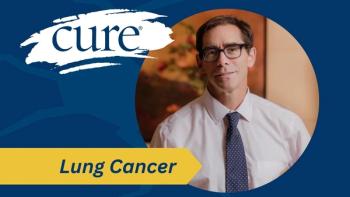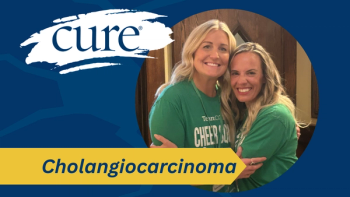
Tribute to My Husband: A Partner Who Shows Up
Key Takeaways
- The narrative emphasizes the critical role of a supportive partner in managing chronic small lymphocytic lymphoma over 16 years.
- Rick's unwavering support included attending treatments, learning new medical procedures, and assisting with home-based care.
I want to appreciate and acknowledge the one person who has had a profoundly positive impact on me throughout my 16-year journey with chronic small lymphocytic lymphoma.
As this year winds down and we begin to think about celebrating the holidays, it is often a time of deep gratitude for me. In that spirit, I want to appreciate and acknowledge the one person who has had a profoundly positive impact on me throughout my 16-year journey with chronic small lymphocytic lymphoma — my husband, Rick.
Rick and I have been married for 52 years. I’ll never forget how he hugged me so tightly after I received my diagnosis. At the time, we both read that the “average” lifespan was 10 years. He looked at me and said he would be with me every step of the way — and he has stayed true to his word.
He came with me to each set of infusions that I needed three different times over the 16 years. He sat beside me during radiation treatments when my cancer entered my lacrimal glands above my eyes, and again years later when it reached my cheeks. Through it all, he cheered me on when I needed it the most.
As time went on, I began experiencing many sinus infections, and my doctor informed me that I needed to begin IVIG — a medical treatment of concentrated antibodies (immunoglobulin) to help my now-compromised immune system. These treatments are administered directly into the bloodstream. Rick was all in, accompanying me every four weeks and sitting with me for five hours at a time. I will continue these the rest of my life, with Rick by my side, hopefully.
Eventually, a new subcutaneous infusion became available that could be done at home. Rick immediately encouraged me to pursue it, saying how much easier it would be to do this in the comfort of our own home — and in about half the time. He attended all the training sessions with me to learn how to administer it correctly. Together, we went through six sessions, videoing parts of the process, taking photos of key steps, and jotting down detailed notes. When the nurse finally felt we were ready, we took on the responsibility ourselves.
I cannot thank my husband enough for how supportive he has been along the way. I recently needed knee-replacement procedure — at a fortunate time, since I am currently off my cancer medication, which needed to happen before surgery. Rick simply said, “Let’s do this so we can continue to walk together for years to come!” He never once hesitated or considered how difficult my recovery might be for him. I wouldn’t have been able to get through it without his love, encouragement, attentive care and the meals he prepared for me — breakfast, lunch and dinner!
To have someone like Rick by your side is more than a blessing — it is a true gift. If you’re a caretaker reading my blog, this is what it looks like to really show up for someone. This is what it looks like to help a person feel she’s not a burden, but an opportunity — a chance to demonstrate love, commitment and the simple truth that this person matters.
I realize that not everyone can provide this level of care because of life’s many obligations, but my motto has always been, “If there’s a will, there’s a way” — to be there for someone in whatever capacity you can. This kind of care requires no repayment, yet it sets an example for others to witness — friends, family and even future caretakers — who may someday have the opportunity to show up for you in return.
This piece reflects the author’s personal experience and perspective. For medical advice, please consult your health care provider.
For more news on cancer updates, research and education,





